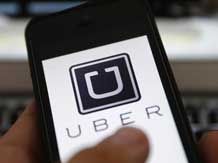 Uber, the San Francisco-based cab service aggregator, plans to start services for auto-rickshaws in the coming months, it is learnt.
Uber, the San Francisco-based cab service aggregator, plans to start services for auto-rickshaws in the coming months, it is learnt.
Its executives are test-marketing the model in New Delhi, with the process of getting autos on board Uber underway.
If finalised, this would mean competition for Bengaluru-based Ola, which provides services for autos in some major Indian cities. Actual launch of the service might take some months.
This would be the first time Uber is exploring aggregation outside the taxi space in India.
An email to the Uber spokesperson wasn't answered.
Uber has the largest network in India outside the US.
| HAILING IN THE RAIN |
|
The latest development comes as the city's transport department has written to Uber to stop plying, as condition for reviewing its new application for a radio taxi licence.
Last year, the government cancelled lthe icences of Ola and Uber, following the rape of a passenger, allegedly in a Uber-networked taxi by the driver. At present, however, both Ola and Uber cabs continue to ply in Delhi.
For the auto services, Ola does not charge any commission from the drivers on its network for every ride.
Instead, the drivers get a commission in the range of Rs 1,500 a month.
However, when Ola had started its services for autos, it began with a monthly payment of Rs 5,000 to the drivers, later reduced to about Rs 3,000 a month.
The passenger pays an additional Rs 10 as a convenience charge on the total fare.
Uber’s entry into auto services would be in line with the company’s effort to shed its ‘premium’ image among consumers in India. Ola, with the largest network in India, has positioned itself as a mass market brand, with one of the lowest fares being its characteristic.
Uber cut its fares by about 30 per cent to gain market share after the acquisition of TaxiForsure by Ola.
Cab services are a hyper-local model, where building the supply chain takes a lot of time and investment.
These companies are burning a lot of cash every month.
A new revenue stream, such as autos, could help companies like Uber and Ola in the long run, with the market still being developed.
However, the financial advantage of foraying into auto services is yet to be established.











